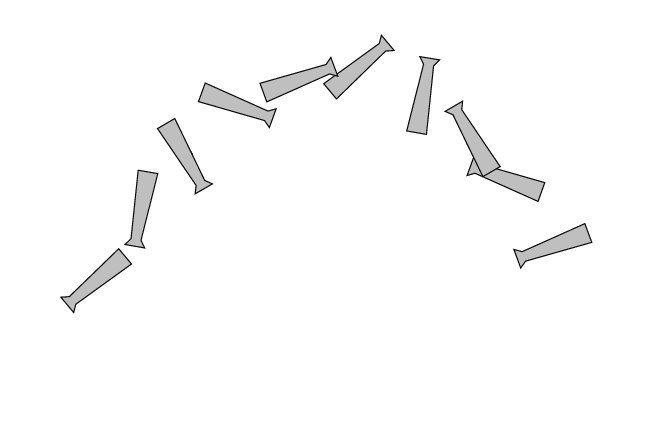The center of mass: discrete case
When several objects collide or a single object explodes, the individual pieces may fly all over the place. However, if one considers all the pieces as a whole, via the total mass and motion of the center of mass, then Newton's Laws are simple and easy to solve again.
- How to define the center of mass for a set of little balls
- The connection between the center of mass and momentum in a collision
The center of mass: extended case
What about extended objects? Some of the nice rules you've learned so far in the class, such as
" ... in projectile motion, the x-velocity remains
constant while the y-velocity changes linearly with
time. The trajectory of an object thus traces
a parabolic curve ...."
don't seem to work if you pick any arbitrary part of an extended body. For example, if I toss a baseball bat up into the air, a movie might show this:
But how can we find the center of mass of an extended object?
 Copyright © Michael Richmond.
This work is licensed under a Creative Commons License.
Copyright © Michael Richmond.
This work is licensed under a Creative Commons License.
